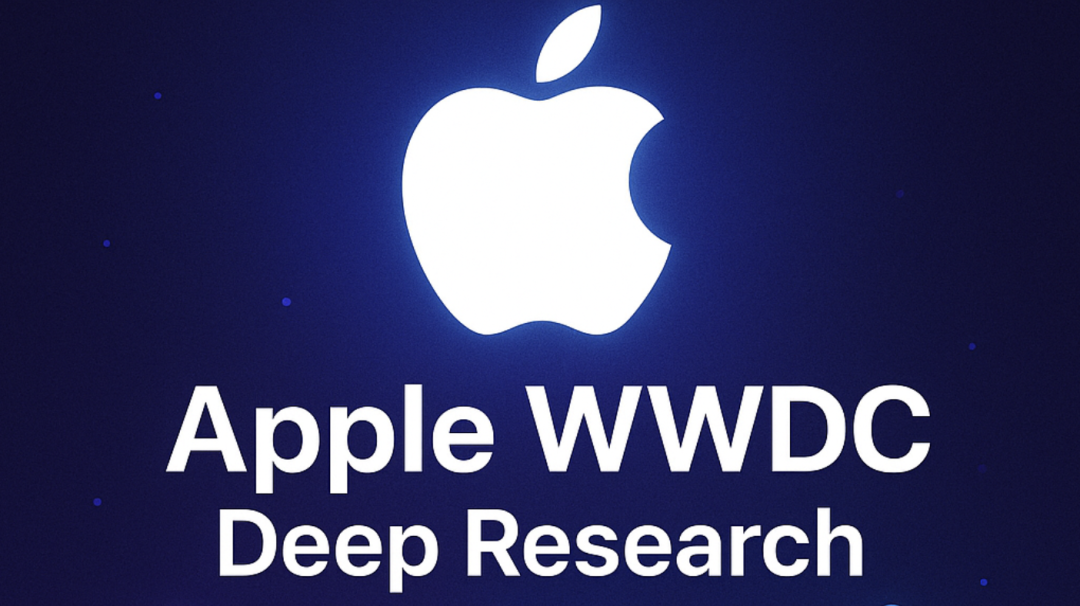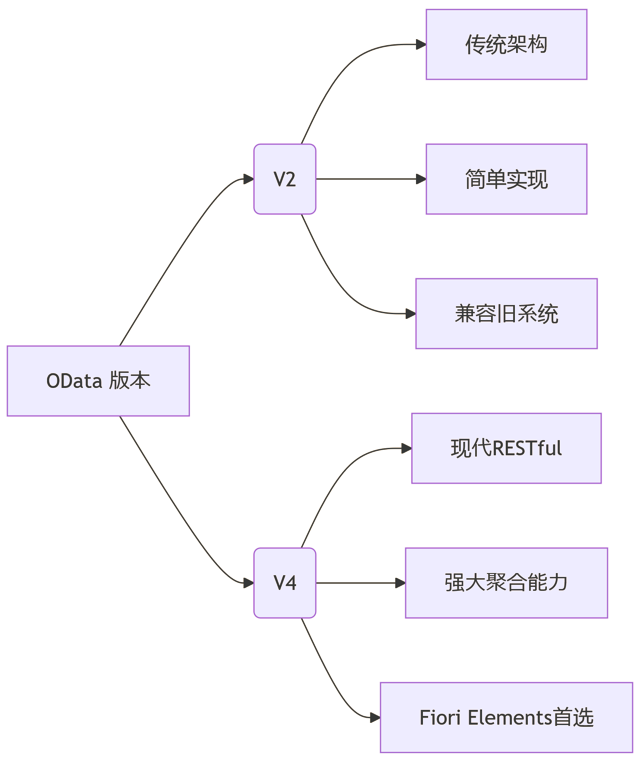openssl3.2 - 官方demo学习 - guide - quic-client-block.c
文章目录
- openssl3.2 - 官方demo学习 - guide - quic-client-block.c
- 概述
- 笔记
- END
openssl3.2 - 官方demo学习 - guide - quic-client-block.c
概述
在程序运行时, 要指定环境变量 SSL_CERT_FILE=rootcert.pem, 同时将rootcert.pem拷贝到工程目录下, 否则不好使
吐槽啊, 为啥不用命令行参数或者API参数传进来啊, 整啥环境变量啊, 看着膈应.
quic服务启动(openssl3.2 - quic服务的运行)时的命令行为 quicserver.exe -trace localhost 23456 servercert.pem serverkey.pem
本程序(quic客户端)命令行只能为 localhost 23456 才行
用 127.0.0.1 23456 不好使.
如果要单步调试, 得赶紧的. quic服务启动后, 如果30秒内没有客户端来, quic服务会退出, 这太不礼貌了…
只能跑一下, 听个响, 学不到东西.
这个demo, 是不是只想展示, openssl可以作为quic客户端程序的tls实现?
笔记
/*!
* \file quic-client-block.c
* \note openssl3.2 - 官方demo学习 - guide - quic-client-block.c
* 在程序运行时, 要指定环境变量 SSL_CERT_FILE=rootcert.pem, 同时将rootcert.pem拷贝到工程目录下, 否则不好使
* 吐槽啊, 为啥不用命令行参数或者API参数传进来啊, 整啥环境变量啊, 看着膈应.
*
* quic服务启动时的命令行为 quicserver.exe -trace localhost 23456 servercert.pem serverkey.pem
本程序(quic客户端)命令行只能为 localhost 23456 才行
用 127.0.0.1 23456 不好使.如果要单步调试, 得赶紧的. quic服务启动后, 如果30秒内没有客户端来, quic服务会退出, 这太不礼貌了...
只能跑一下, 听个响, 学不到东西.这个demo, 是不是只想展示, openssl可以作为quic客户端程序的tls实现?
*//** Copyright 2023 The OpenSSL Project Authors. All Rights Reserved.** Licensed under the Apache License 2.0 (the "License"). You may not use* this file except in compliance with the License. You can obtain a copy* in the file LICENSE in the source distribution or at* https://www.openssl.org/source/license.html*//** NB: Changes to this file should also be reflected in* doc/man7/ossl-guide-quic-client-block.pod*/#include <string.h>/* Include the appropriate header file for SOCK_DGRAM */
#ifdef _WIN32 /* Windows */
# include <winsock2.h>
#else /* Linux/Unix */
# include <sys/socket.h>
#endif#include <openssl/bio.h>
#include <openssl/ssl.h>
#include <openssl/err.h>#include "my_openSSL_lib.h"/* Helper function to create a BIO connected to the server */
static BIO* create_socket_bio(const char* hostname, const char* port,int family, BIO_ADDR** peer_addr)
{int sock = -1;BIO_ADDRINFO* res;const BIO_ADDRINFO* ai = NULL;BIO* bio;/** Lookup IP address info for the server.*/if (!BIO_lookup_ex(hostname, port, BIO_LOOKUP_CLIENT, family, SOCK_DGRAM, 0,&res))return NULL;/** Loop through all the possible addresses for the server and find one* we can connect to.*/for (ai = res; ai != NULL; ai = BIO_ADDRINFO_next(ai)) {/** Create a UDP socket. We could equally use non-OpenSSL calls such* as "socket" here for this and the subsequent connect and close* functions. But for portability reasons and also so that we get* errors on the OpenSSL stack in the event of a failure we use* OpenSSL's versions of these functions.*/sock = BIO_socket(BIO_ADDRINFO_family(ai), SOCK_DGRAM, 0, 0);if (sock == -1)continue;/* Connect the socket to the server's address */if (!BIO_connect(sock, BIO_ADDRINFO_address(ai), 0)) {BIO_closesocket(sock);sock = -1;continue;}/* Set to nonblocking mode */if (!BIO_socket_nbio(sock, 1)) {BIO_closesocket(sock);sock = -1;continue;}break;}if (sock != -1) {*peer_addr = BIO_ADDR_dup(BIO_ADDRINFO_address(ai));if (*peer_addr == NULL) {BIO_closesocket(sock);return NULL;}}/* Free the address information resources we allocated earlier */BIO_ADDRINFO_free(res);/* If sock is -1 then we've been unable to connect to the server */if (sock == -1)return NULL;/* Create a BIO to wrap the socket */bio = BIO_new(BIO_s_datagram());if (bio == NULL) {BIO_closesocket(sock);return NULL;}/** Associate the newly created BIO with the underlying socket. By* passing BIO_CLOSE here the socket will be automatically closed when* the BIO is freed. Alternatively you can use BIO_NOCLOSE, in which* case you must close the socket explicitly when it is no longer* needed.*/BIO_set_fd(bio, sock, BIO_CLOSE);return bio;
}/** Simple application to send a basic HTTP/1.0 request to a server and* print the response on the screen. Note that HTTP/1.0 over QUIC is* non-standard and will not typically be supported by real world servers. This* is for demonstration purposes only.*/
int main(int argc, char* argv[])
{SSL_CTX* ctx = NULL;SSL* ssl = NULL;BIO* bio = NULL;int res = EXIT_FAILURE;int ret;unsigned char alpn[] = { 8, 'h', 't', 't', 'p', '/', '1', '.', '0' };const char* request_start = "GET / HTTP/1.0\r\nConnection: close\r\nHost: ";const char* request_end = "\r\n\r\n";size_t written, readbytes;char buf[160];BIO_ADDR* peer_addr = NULL;char* hostname, * port;int argnext = 1;int ipv6 = 0;if (argc < 3) {printf("Usage: quic-client-block [-6] hostname port\n");goto end;}if (!strcmp(argv[argnext], "-6")) {if (argc < 4) {printf("Usage: quic-client-block [-6] hostname port\n");goto end;}ipv6 = 1;argnext++;}hostname = argv[argnext++];port = argv[argnext];/** Create an SSL_CTX which we can use to create SSL objects from. We* want an SSL_CTX for creating clients so we use* OSSL_QUIC_client_method() here.*/ctx = SSL_CTX_new(OSSL_QUIC_client_method());if (ctx == NULL) {printf("Failed to create the SSL_CTX\n");goto end;}/** Configure the client to abort the handshake if certificate* verification fails. Virtually all clients should do this unless you* really know what you are doing.*/SSL_CTX_set_verify(ctx, SSL_VERIFY_PEER, NULL);/* Use the default trusted certificate store */if (!SSL_CTX_set_default_verify_paths(ctx)) {printf("Failed to set the default trusted certificate store\n");goto end;}/* Create an SSL object to represent the TLS connection */ssl = SSL_new(ctx);if (ssl == NULL) {printf("Failed to create the SSL object\n");goto end;}/** Create the underlying transport socket/BIO and associate it with the* connection.*/bio = create_socket_bio(hostname, port, ipv6 ? AF_INET6 : AF_INET, &peer_addr);if (bio == NULL) {printf("Failed to crete the BIO\n");goto end;}SSL_set_bio(ssl, bio, bio);/** Tell the server during the handshake which hostname we are attempting* to connect to in case the server supports multiple hosts.*/if (!SSL_set_tlsext_host_name(ssl, hostname)) {printf("Failed to set the SNI hostname\n");goto end;}/** Ensure we check during certificate verification that the server has* supplied a certificate for the hostname that we were expecting.* Virtually all clients should do this unless you really know what you* are doing.*/if (!SSL_set1_host(ssl, hostname)) {printf("Failed to set the certificate verification hostname");goto end;}/* SSL_set_alpn_protos returns 0 for success! */if (SSL_set_alpn_protos(ssl, alpn, sizeof(alpn)) != 0) {printf("Failed to set the ALPN for the connection\n");goto end;}/* Set the IP address of the remote peer */if (!SSL_set1_initial_peer_addr(ssl, peer_addr)) {printf("Failed to set the initial peer address\n");goto end;}/*! 到这就要将quic服务开起来, 否则连接失败 *//* Do the handshake with the server */if (SSL_connect(ssl) < 1) {printf("Failed to connect to the server\n");/** If the failure is due to a verification error we can get more* information about it from SSL_get_verify_result().*/if (SSL_get_verify_result(ssl) != X509_V_OK)printf("Verify error: %s\n",X509_verify_cert_error_string(SSL_get_verify_result(ssl)));goto end;}/* Write an HTTP GET request to the peer */if (!SSL_write_ex(ssl, request_start, strlen(request_start), &written)) {printf("Failed to write start of HTTP request\n");goto end;}if (!SSL_write_ex(ssl, hostname, strlen(hostname), &written)) {printf("Failed to write hostname in HTTP request\n");goto end;}if (!SSL_write_ex(ssl, request_end, strlen(request_end), &written)) {printf("Failed to write end of HTTP request\n");goto end;}/** Get up to sizeof(buf) bytes of the response. We keep reading until the* server closes the connection.*//*! 这前面, 给服务器发了3句话这下面循环, 然后将服务器回包读完, 就往下走了 */while (SSL_read_ex(ssl, buf, sizeof(buf), &readbytes)) {/** OpenSSL does not guarantee that the returned data is a string or* that it is NUL terminated so we use fwrite() to write the exact* number of bytes that we read. The data could be non-printable or* have NUL characters in the middle of it. For this simple example* we're going to print it to stdout anyway.*/fwrite(buf, 1, readbytes, stdout);}/* In case the response didn't finish with a newline we add one now */printf("\n");/** Check whether we finished the while loop above normally or as the* result of an error. The 0 argument to SSL_get_error() is the return* code we received from the SSL_read_ex() call. It must be 0 in order* to get here. Normal completion is indicated by SSL_ERROR_ZERO_RETURN. In* QUIC terms this means that the peer has sent FIN on the stream to* indicate that no further data will be sent.*/switch (SSL_get_error(ssl, 0)) {case SSL_ERROR_ZERO_RETURN:/* Normal completion of the stream *//*! 最后是从这里break的 */break;case SSL_ERROR_SSL:/** Some stream fatal error occurred. This could be because of a stream* reset - or some failure occurred on the underlying connection.*/switch (SSL_get_stream_read_state(ssl)) {case SSL_STREAM_STATE_RESET_REMOTE:printf("Stream reset occurred\n");/* The stream has been reset but the connection is still healthy. */break;case SSL_STREAM_STATE_CONN_CLOSED:printf("Connection closed\n");/* Connection is already closed. Skip SSL_shutdown() */goto end;default:printf("Unknown stream failure\n");break;}break;default:/* Some other unexpected error occurred */printf("Failed reading remaining data\n");break;}/** Repeatedly call SSL_shutdown() until the connection is fully* closed.*/do {ret = SSL_shutdown(ssl); // 关断ssl需要好久...if (ret < 0) {printf("Error shutting down: %d\n", ret);goto end;}} while (ret != 1);/* Success! */res = EXIT_SUCCESS;
end:/** If something bad happened then we will dump the contents of the* OpenSSL error stack to stderr. There might be some useful diagnostic* information there.*/if (res == EXIT_FAILURE)ERR_print_errors_fp(stderr);/** Free the resources we allocated. We do not free the BIO object here* because ownership of it was immediately transferred to the SSL object* via SSL_set_bio(). The BIO will be freed when we free the SSL object.*/SSL_free(ssl);SSL_CTX_free(ctx);BIO_ADDR_free(peer_addr);return res;
}END
相关文章:

openssl3.2 - 官方demo学习 - guide - quic-client-block.c
文章目录 openssl3.2 - 官方demo学习 - guide - quic-client-block.c概述笔记END openssl3.2 - 官方demo学习 - guide - quic-client-block.c 概述 在程序运行时, 要指定环境变量 SSL_CERT_FILErootcert.pem, 同时将rootcert.pem拷贝到工程目录下, 否则不好使 吐槽啊, 为啥不…...

滑动窗口经典入门题-——长度最小子数组
文章目录 算法原理题目解析暴力枚举法的代码优化第一步初始化第二步right右移第三步left右移 滑动窗口法的代码 算法原理 滑动窗口是一种在序列(例如数组或链表)上解决问题的算法模式。它通常用于解决子数组或子字符串的问题,其中滑动窗口表示…...

AcGeMatrix2d::alignCoordSys一种实现方式
问题描述 此处为了简化问题,在2维空间中处理,按以下方式调用,AcGeMatrix2d::alignCoordSys是如何求出一个矩阵的呢,这里提供一个实现思路(但效率不保证好) AcGeMatrix2d matTrans AcGeMatrix2d::alignCo…...

InternLM第5次课笔记
LMDeploy 大模型量化部署实践 1 大模型部署背景 2 LMDeploy简介 3 动手实践环节 https://github.com/InternLM/tutorial/blob/main/lmdeploy/lmdeploy.md 3...

2018年认证杯SPSSPRO杯数学建模D题(第一阶段)投篮的最佳出手点全过程文档及程序
2018年认证杯SPSSPRO杯数学建模 对于投篮最佳出手点的探究 D题 投篮的最佳出手点 原题再现: 影响投篮命中率的因素不仅仅有出手角度、球感、出手速度,还有出手点的选择。规范的投篮动作包含两膝微屈、重心落在两脚掌上、下肢蹬地发力、身体随之向前上…...
使用pdfbox 为 PDF 增加水印
使用pdfbox 为 PDF增加水印https://www.jylt.cc/#/detail?activityIndex2&idbd410851b0a72dad3105f9d50787f914 引入依赖 <dependency><groupId>org.apache.pdfbox</groupId><artifactId>pdfbox</artifactId><version>3.0.1</ve…...

6.【CPP】Date类的实现
Date.h #pragma once using namespace std; #include<iostream>class Date {friend ostream& operator<<(ostream& out, const Date& d);friend istream& operator>>(istream& in, Date& d); public://构造函数会被频繁调用,放在类…...

三角形任意一外角大于不相邻的任意一内角
一.代数证明 ∵ 对与△ A C B 中 ∠ c 外接三角形是 ∠ B C D ∵对与△ACB中∠c外接三角形是∠BCD ∵对与△ACB中∠c外接三角形是∠BCD ∴ ∠ B C D π − ∠ C ∴∠BCD\pi-∠C ∴∠BCDπ−∠C ∵ ∠ A ∠ B ∠ C π ∵∠A∠B∠C\pi ∵∠A∠B∠Cπ ∴ ∠ B C D ∠ A ∠…...

【Spring Boot 3】【Redis】集成Lettuce
【Spring Boot 3】【Redis】集成Lettuce 背景介绍开发环境开发步骤及源码工程目录结构总结背景 软件开发是一门实践性科学,对大多数人来说,学习一种新技术不是一开始就去深究其原理,而是先从做出一个可工作的DEMO入手。但在我个人学习和工作经历中,每次学习新技术总是要花…...

【SQL注入】SQLMAP v1.7.11.1 汉化版
下载链接 【SQL注入】SQLMAP v1.7.11.1 汉化版 简介 SQLMAP是一款开源的自动化SQL注入工具,用于扫描和利用Web应用程序中的SQL注入漏洞。它在安全测试领域被广泛应用,可用于检测和利用SQL注入漏洞,以验证应用程序的安全性。 SQL注入是一种…...

时序预测 | MATLAB实现GRNN广义回归神经网络时间序列未来多步预测(程序含详细预测步骤)
时序预测 | MATLAB实现GRNN广义回归神经网络时间序列未来多步预测(程序含详细预测步骤) 目录 时序预测 | MATLAB实现GRNN广义回归神经网络时间序列未来多步预测(程序含详细预测步骤)预测效果基本介绍程序设计参考资料预测效果 基本介绍 MATLAB实现GRNN广义回归神经网络时间序列…...

长期戴耳机的危害有哪些?戴哪种耳机不伤耳朵听力?
长期佩戴耳机可能会出现听力下降、耳道感染等危害。 听力下降:长时间戴耳机可能会导致耳道内的声音过大,容易对耳膜造成一定的刺激,容易出现听力下降的情况。 耳道感染:长时间戴耳机,耳道长期处于封闭潮湿的情况下&a…...

C++中的预处理
一.预定义符号 1.__FILE__进行编译的源文件 2.__LINE__文件当前的行号 3.__DATE__文件被编译的日期 4.__TIME文件被编译的时间 5.__STDC__如果编译器遵循ANSIC,其值为1,否则未定义 二.#define 基本语法:#define 名字 内容 eg.define M 1 经#define定义的常量时不经过…...

flink 最后一个窗口一直没有新数据,窗口不关闭问题
flink 最后一个窗口一直没有新数据,窗口不关闭问题 自定义实现 WatermarkStrategy接口 自定义实现 WatermarkStrategy接口 窗口类型:滚动窗口 代码: public static class WatermarkDemoFunction implements WatermarkStrategy<JSONObject…...

mybatis----小细节
1、起别名 在MyBatis中,<typeAliases>元素用于定义类型别名,它可以将Java类名映射为一个更简短的别名,这样在映射文件中可以直接使用别名而不需要完整的类名。 下面是一个示例: 在mybatis核心配置文件中配置typeAliases标…...

解密Oracle数据库引擎:揭开数据存储的神秘面纱
目录 1、介绍Oracle数据库引擎 1.1 什么是Oracle数据库引擎 1.2 Oracle数据库引擎的作用和功能 1.3 Oracle数据库引擎的历史和发展 2、Oracle数据库引擎的体系结构 2.1 Oracle数据库实例的组成部分 2.2 Oracle数据库引擎的层次结构 2.3 Oracle数据库引擎的关键组件 3、…...

「HDLBits题解」Karnaugh Map to Circuit
本专栏的目的是分享可以通过HDLBits仿真的Verilog代码 以提供参考 各位可同时参考我的代码和官方题解代码 或许会有所收益 相关资料:卡诺图化简法-CSDN博客 题目链接:Kmap1 - HDLBits module top_module(input a,input b,input c,output out );assig…...

由于找不到d3dcompiler_43.dll缺失,无法打开软件的解决方法分享
d3dcompiler43.dll是什么文件?为什么会出现丢失的情况?又该如何解决呢?本文将详细介绍d3dcompiler43.dll的作用和影响,并提供6个有效的解决方法。 一、d3dcompiler43.dll是什么文件? d3dcompiler43.dll是DirectX SDK…...

现阶段Python和Java哪个更吃香?
现阶段Python和Java哪个更吃香? 在开始前我有一些资料,是我根据网友给的问题精心整理了一份「Java的资料从专业入门到高级教程」, 点个关注在评论区回复“888”之后私信回复“888”,全部无偿共享给大家!!&…...

基于DNA的密码学和隐写术综述
摘要 本文全面调研了不同的脱氧核糖核酸(DNA)-基于密码学和隐写术技术。基于DNA的密码学是一个新兴领域,利用DNA分子的大规模并行性和巨大的存储容量来编码和解码信息。近年来,由于其相对传统密码学方法的潜在优势,如高存储容量、低错误率和对环境因素的抗性,该领域引起…...

golang循环变量捕获问题
在 Go 语言中,当在循环中启动协程(goroutine)时,如果在协程闭包中直接引用循环变量,可能会遇到一个常见的陷阱 - 循环变量捕获问题。让我详细解释一下: 问题背景 看这个代码片段: fo…...

从WWDC看苹果产品发展的规律
WWDC 是苹果公司一年一度面向全球开发者的盛会,其主题演讲展现了苹果在产品设计、技术路线、用户体验和生态系统构建上的核心理念与演进脉络。我们借助 ChatGPT Deep Research 工具,对过去十年 WWDC 主题演讲内容进行了系统化分析,形成了这份…...

QMC5883L的驱动
简介 本篇文章的代码已经上传到了github上面,开源代码 作为一个电子罗盘模块,我们可以通过I2C从中获取偏航角yaw,相对于六轴陀螺仪的yaw,qmc5883l几乎不会零飘并且成本较低。 参考资料 QMC5883L磁场传感器驱动 QMC5883L磁力计…...

【SpringBoot】100、SpringBoot中使用自定义注解+AOP实现参数自动解密
在实际项目中,用户注册、登录、修改密码等操作,都涉及到参数传输安全问题。所以我们需要在前端对账户、密码等敏感信息加密传输,在后端接收到数据后能自动解密。 1、引入依赖 <dependency><groupId>org.springframework.boot</groupId><artifactId...

五年级数学知识边界总结思考-下册
目录 一、背景二、过程1.观察物体小学五年级下册“观察物体”知识点详解:由来、作用与意义**一、知识点核心内容****二、知识点的由来:从生活实践到数学抽象****三、知识的作用:解决实际问题的工具****四、学习的意义:培养核心素养…...

Ascend NPU上适配Step-Audio模型
1 概述 1.1 简述 Step-Audio 是业界首个集语音理解与生成控制一体化的产品级开源实时语音对话系统,支持多语言对话(如 中文,英文,日语),语音情感(如 开心,悲伤)&#x…...

SAP学习笔记 - 开发26 - 前端Fiori开发 OData V2 和 V4 的差异 (Deepseek整理)
上一章用到了V2 的概念,其实 Fiori当中还有 V4,咱们这一章来总结一下 V2 和 V4。 SAP学习笔记 - 开发25 - 前端Fiori开发 Remote OData Service(使用远端Odata服务),代理中间件(ui5-middleware-simpleproxy)-CSDN博客…...

Python基于历史模拟方法实现投资组合风险管理的VaR与ES模型项目实战
说明:这是一个机器学习实战项目(附带数据代码文档),如需数据代码文档可以直接到文章最后关注获取。 1.项目背景 在金融市场日益复杂和波动加剧的背景下,风险管理成为金融机构和个人投资者关注的核心议题之一。VaR&…...

第7篇:中间件全链路监控与 SQL 性能分析实践
7.1 章节导读 在构建数据库中间件的过程中,可观测性 和 性能分析 是保障系统稳定性与可维护性的核心能力。 特别是在复杂分布式场景中,必须做到: 🔍 追踪每一条 SQL 的生命周期(从入口到数据库执行)&#…...

PostgreSQL——环境搭建
一、Linux # 安装 PostgreSQL 15 仓库 sudo dnf install -y https://download.postgresql.org/pub/repos/yum/reporpms/EL-$(rpm -E %{rhel})-x86_64/pgdg-redhat-repo-latest.noarch.rpm# 安装之前先确认是否已经存在PostgreSQL rpm -qa | grep postgres# 如果存在࿰…...
